Hello, dear readers! Have you ever come across furniture that feels both earthy and artistic at the same time? Welcome to the vibrant world of lacquered bamboo furniture from Andhra Pradesh.
This traditional craft combines the strength of bamboo with the glossy charm of natural lacquer, creating pieces that are not only durable but also eye-catching. From stools and chairs to decorative items, every piece reflects the skill and imagination of local artisans.
What makes it special is that it’s eco-friendly, lightweight, and brimming with cultural stories—perfect for homes that value beauty with tradition.
History and Cultural Significance of Lacquered Bamboo
- Ancient Craft Tradition
- The art of lacquer work in Andhra Pradesh goes back several centuries, with roots in the craft traditions of tribal and rural communities.
- Bamboo, being abundant in the forests of the region, naturally became the most important raw material for daily life and household objects.
- The art of lacquer work in Andhra Pradesh goes back several centuries, with roots in the craft traditions of tribal and rural communities.
- Introduction of Lacquer
- Lacquer coating techniques were believed to have been introduced through interactions with craftsmen from neighboring regions like Karnataka and Maharashtra.
- Over time, Andhra’s artisans combined lacquer techniques with bamboo weaving to create colorful furniture, toys, and utility items.
- Lacquer coating techniques were believed to have been introduced through interactions with craftsmen from neighboring regions like Karnataka and Maharashtra.
- Royal Patronage
- During medieval times, local rulers encouraged these crafts by commissioning lacquered bamboo objects for palaces and temples.
- This gave the craft both economic and cultural prestige, ensuring its survival through generations.
- During medieval times, local rulers encouraged these crafts by commissioning lacquered bamboo objects for palaces and temples.
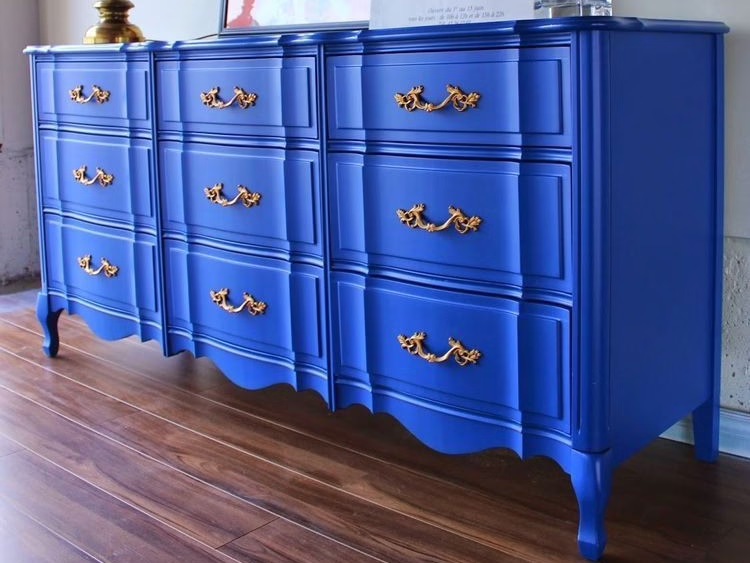
🎨 Cultural Significance
- Utility Meets Art
- In rural Andhra households, lacquered bamboo furniture was not only used for daily needs but also valued for its beauty.
- Chairs, stools, storage boxes, and even trays made with lacquered bamboo carried both function and decoration.
- In rural Andhra households, lacquered bamboo furniture was not only used for daily needs but also valued for its beauty.
- Symbol of Identity
- The craft is closely tied to the identity of tribal and artisan communities, such as the Chitrakars and wood/bamboo craftsmen of the Eastern Ghats.
- Each piece of lacquered bamboo furniture reflected regional aesthetics—bright colors, geometric designs, and sometimes floral motifs.
- The craft is closely tied to the identity of tribal and artisan communities, such as the Chitrakars and wood/bamboo craftsmen of the Eastern Ghats.
- Ritual and Celebration
- Lacquered bamboo objects often formed part of festive occasions, marriages, and community gatherings.
- Gifting lacquered furniture or decorative bamboo items was seen as a gesture of goodwill and prosperity.
- Lacquered bamboo objects often formed part of festive occasions, marriages, and community gatherings.
- Sustainable Craft Heritage
- The use of bamboo reflects a deep cultural respect for nature.
- By adding lacquer, artisans extended the durability of bamboo, ensuring it remained useful while being visually appealing.
- The use of bamboo reflects a deep cultural respect for nature.
🌏 Influence in Modern Times
- Cultural Export
- With the growth of handicraft exports, lacquered bamboo products from Andhra Pradesh reached national and international markets.
- They are now showcased at craft fairs, exhibitions, and cultural events across India.
- With the growth of handicraft exports, lacquered bamboo products from Andhra Pradesh reached national and international markets.
- Symbol of Craft Heritage
- Today, lacquered bamboo furniture represents not just utility but also Andhra Pradesh’s enduring link to sustainable living and traditional art.
- It stands as a symbol of cultural resilience, blending ancestral knowledge with modern design sensibilities.
- Today, lacquered bamboo furniture represents not just utility but also Andhra Pradesh’s enduring link to sustainable living and traditional art.
Materials Used and Step-by-Step Process of Making
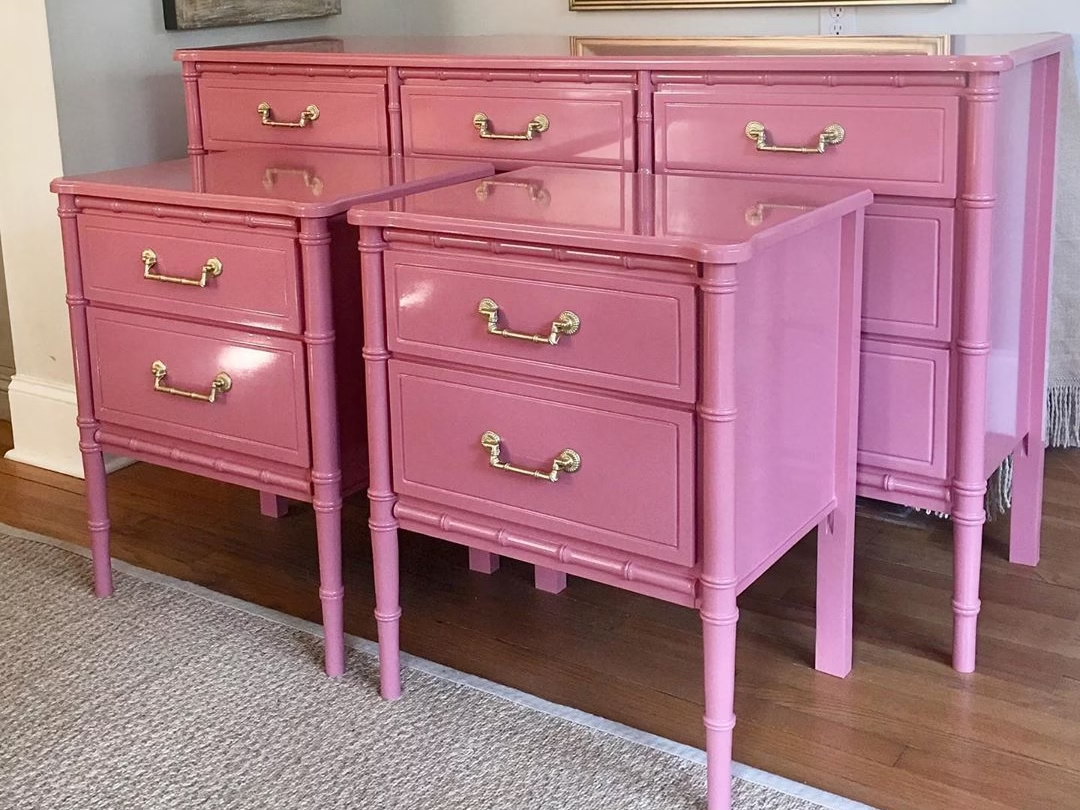
1. Bamboo (The Core Material)
- Types of Bamboo: Strong, mature bamboo culms (generally 3–5 years old) are chosen for durability.
- Why Bamboo?: Flexible, lightweight, and eco-friendly, making it ideal for shaping into furniture.
- Seasoning: Bamboo is dried and treated to prevent cracking, pests, and moisture damage.
2. Natural Lacquer (The Color and Shine)
- Source: Extracted from the secretion of certain insects or obtained from trees like Kusum.
- Purpose: Gives the bamboo a glossy finish and protects it from wear and tear.
- Colors: Traditionally red, green, yellow, and black are most popular.
3. Dyes and Pigments
- Natural or Synthetic: Earlier, natural vegetable dyes were used; now synthetic pigments add brighter shades.
- Mixing: Dyes are blended with lacquer to create long-lasting, vivid designs.
4. Wood and Cane (Support Materials)
- Use in Frames: Sometimes additional wood or cane is added for structural strength.
- Binding: Cane strips or thin bamboo slivers are used to bind joints securely.
5. Tools of the Craft
- Knives and Saws: For cutting and shaping bamboo.
- Lathes: Traditional hand lathes are used for applying lacquer while the bamboo spins.
- Brushes and Cloth Pads: For spreading colors and polishing.
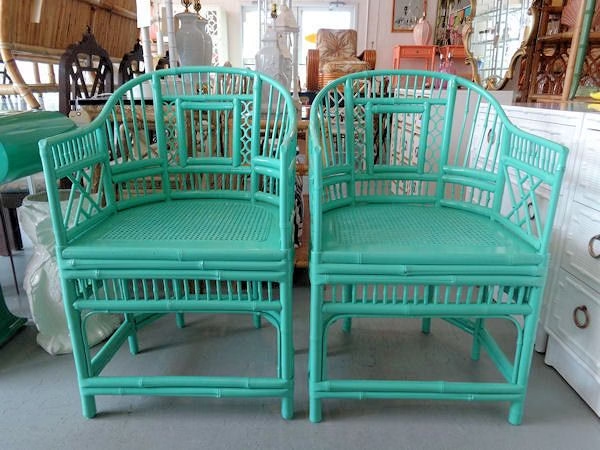
🛠 Step-by-Step Process of Making
1. Harvesting and Preparing Bamboo
- Mature bamboo is cut at the right season (usually after monsoons when moisture is low).
- Culms are split or shaped depending on the type of furniture required.
- Nodes and rough edges are smoothed to ensure uniform surfaces.
2. Seasoning and Treating Bamboo
- Bamboo is dried under shade to reduce moisture without cracking.
- Smoke treatment or chemical treatment is applied to prevent insect attack.
- This ensures the furniture lasts longer.
3. Cutting and Shaping the Frame
- Artisans cut bamboo poles into desired lengths.
- Larger pieces are used for legs and frames; thinner splits for weaving or detailing.
- The parts are bent or curved using heat and water for creative designs.
4. Assembling the Structure
- The frame of chairs, tables, stools, or sofas is carefully assembled.
- Cane or bamboo strips are tied around joints for strength.
- At this stage, the furniture has its raw shape but no decoration.
5. Applying Lacquer on the Lathe
- The bamboo piece is fixed onto a traditional lathe.
- While it spins, lacquer sticks mixed with dyes are pressed against the surface.
- Friction from spinning generates heat, melting lacquer, which spreads evenly.
- This creates a smooth, glossy coating that also seals the bamboo.
6. Creating Patterns and Motifs
- Using cloth pads or brushes, artisans create stripes, zig-zags, floral motifs, and dots.
- Bright colors like red, yellow, and green are layered in patterns.
- Designs are often inspired by tribal art, nature, or cultural symbols of Andhra Pradesh.
7. Polishing and Finishing
- A final layer of clear lacquer is applied for extra shine.
- The furniture is left to dry thoroughly to set the colors.
- Additional decorations like cane weaving or cushions may be added for comfort and appeal.
8. Final Quality Check
- Each piece is inspected for smoothness, color consistency, and strength.
- Imperfections are corrected before sending the furniture to markets.
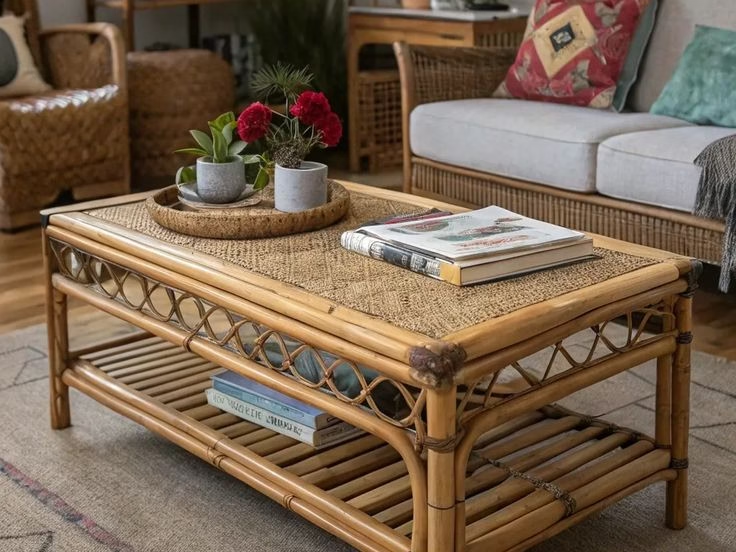
Symbols and Motifs in Lacquered Bamboo Furniture
Lacquered bamboo furniture is not just about utility—it is a craft where every brush of lacquer and every carved or painted motif tells a story.
The artisans of Andhra Pradesh weave their culture, beliefs, and surroundings into these designs, turning simple bamboo into living art. Let’s explore the symbols and motifs that bring this furniture alive.
1. Geometric Patterns: Balance and Order
- Stripes and Bands
- Often painted in bold reds, yellows, and greens, stripes create rhythm and symmetry.
- Symbolize continuity and discipline, adding neatness to chairs, stools, and baskets.
- Often painted in bold reds, yellows, and greens, stripes create rhythm and symmetry.
- Checks and Grids
- Inspired by weaving traditions, grids represent structure and stability.
- Popular on tabletops or storage boxes, making them visually appealing and durable.
- Inspired by weaving traditions, grids represent structure and stability.
- Triangles and Diamonds
- Sharp, angular motifs stand for protection and strength.
- Often used on furniture legs or borders for both strength and decoration.
- Sharp, angular motifs stand for protection and strength.
2. Nature-Inspired Motifs: Echo of Surroundings
- Floral Motifs
- Lotus, marigold, and jasmine designs reflect purity, celebration, and prosperity.
- Commonly painted in bright hues, bringing freshness to stools and partitions.
- Lotus, marigold, and jasmine designs reflect purity, celebration, and prosperity.
- Leafy Vines and Creepers
- Flowing creeper patterns symbolize growth, life, and continuity of nature.
- They decorate the edges of trays, baskets, and low seating, adding elegance.
- Flowing creeper patterns symbolize growth, life, and continuity of nature.
- Animal Figures
- Birds like parrots and peacocks, or simple fish motifs, appear in painted lacquer.
- Symbolize freedom, beauty, and abundance, connecting utility with storytelling.
- Birds like parrots and peacocks, or simple fish motifs, appear in painted lacquer.
3. Cultural and Spiritual Symbols
- Sun Motif
- Radiating sun patterns are a mark of energy and positivity.
- Painted on furniture tops or backrests, they brighten daily life with symbolic warmth.
- Radiating sun patterns are a mark of energy and positivity.
- Temple Motifs
- Simplified gopuram or arch-like forms highlight sacred protection.
- They remind users of tradition while blending with modern household designs.
- Simplified gopuram or arch-like forms highlight sacred protection.
- Dots and Circular Patterns
- Represent unity and cycles of time.
- Perfect for decorative trays or round stools, making them both artistic and meaningful.
- Represent unity and cycles of time.
4. Color Symbolism in Motifs
- Red and Yellow
- Symbolize auspiciousness and joy, often forming the base palette.
- Symbolize auspiciousness and joy, often forming the base palette.
- Green
- Represents fertility and harmony with nature.
- Represents fertility and harmony with nature.
- Black and White Accents
- Used to create contrast, they highlight designs and add modern sharpness.
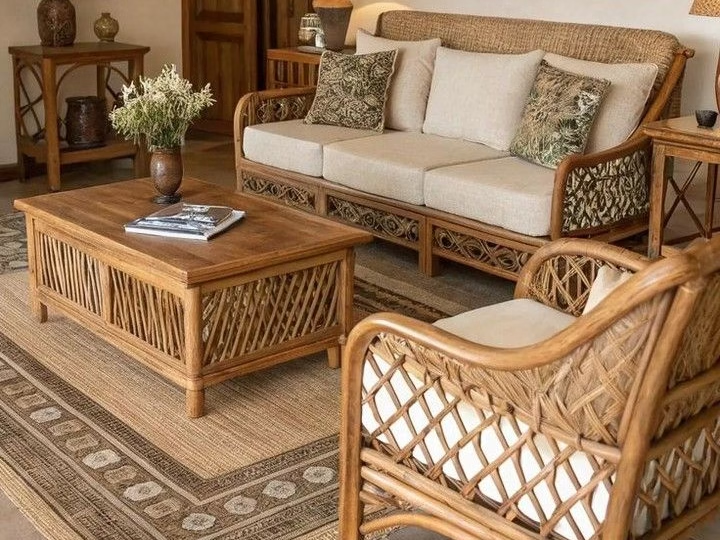
Bamboo Production in Andhra Pradesh
- Annual Bamboo Yield: In 1994, Andhra Pradesh produced approximately 174,000 tons of bamboo, accounting for production on state lands.
- Bamboo Species: The state cultivates various bamboo species, including Bambusa balcooa, Beema bamboo, and Dendrocalamus strictus, suitable for furniture making Grow Billion Trees.
🪑 Bamboo Furniture Market Insights
- Global Market Size: The global bamboo furniture market was valued at USD 13.75 billion in 2024 and is projected to reach USD 23.02 billion by 2032, growing at a CAGR of 6.65% Data Bridge Market Research.
- Export Potential: Bamboo furniture exports from India have been growing, with a reported export revenue of USD 19.3 million between 2000 and 2005.
👩🌾 Artisanal Workforce
- Artisan Communities: In Andhra Pradesh, several artisan communities are involved in bamboo furniture making, contributing to the preservation and promotion of this craft.
- Skill Development: Efforts are underway to enhance the skills of these artisans through training programs and workshops, aiming to improve product quality and market reach.
🌱 Environmental and Economic Impact
- Sustainable Material: Bamboo is a fast-growing, renewable resource, making it an eco-friendly alternative to traditional timber in furniture production.
- Carbon Sequestration: Bamboo plantations contribute to carbon sequestration, aiding in climate change mitigation efforts Cabi Digital Library.
- Economic Benefits: The bamboo furniture industry provides livelihoods to numerous artisans and supports rural economies in Andhra Pradesh.
🛍️ Market Trends and Consumer Preferences
- Demand for Sustainable Products: There is a growing consumer preference for sustainable and eco-friendly furniture, driving the demand for bamboo furniture Grand View Research.
- Design Innovation: Artisans are incorporating contemporary designs and lacquer techniques to appeal to modern consumers while preserving traditional craftsmanship.
🏛️ Government Support and Initiatives
- National Bamboo Mission: The Indian government has launched initiatives like the National Bamboo Mission to promote bamboo cultivation and processing, providing subsidies and support to farmers and artisans.
- Skill Development Programs: Various skill development programs are being implemented to train artisans in advanced bamboo processing techniques, enhancing product quality and marketability.
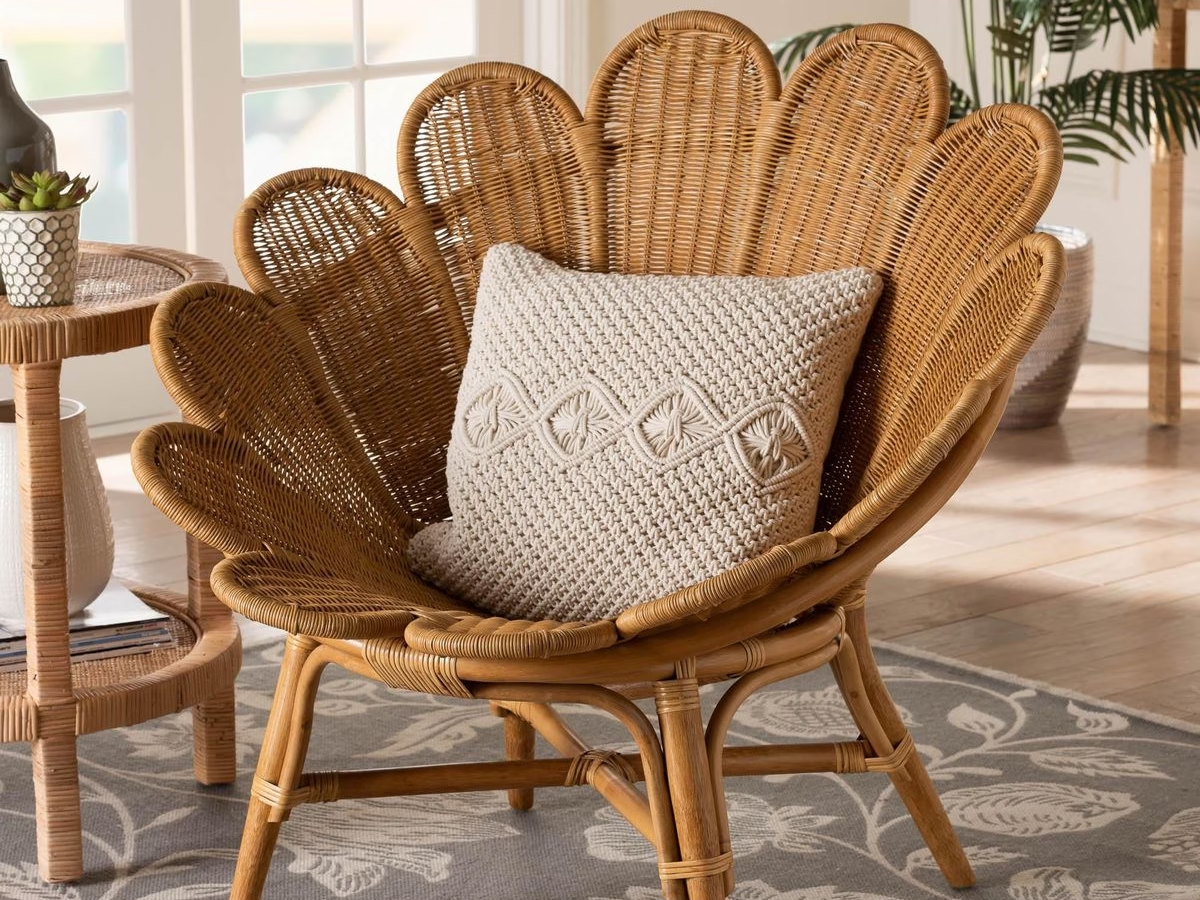
Designs, Styles, and Functional Uses
Lacquered bamboo furniture from Andhra Pradesh is not only durable but also visually striking. The craft combines the natural elegance of bamboo with vibrant lacquer work, resulting in pieces that are both decorative and functional. Let’s explore its designs, styles, and everyday uses.
1. Popular Designs in Lacquered Bamboo Furniture
- Geometric Patterns
- Repeated triangles, squares, and diamonds painted in bright lacquer colors.
- These patterns are often inspired by traditional Andhra motifs.
- Repeated triangles, squares, and diamonds painted in bright lacquer colors.
- Floral and Nature-Inspired Designs
- Leaves, flowers, and vines are delicately painted on tabletops, chair backs, and armrests.
- Adds a natural charm that complements the bamboo texture.
- Leaves, flowers, and vines are delicately painted on tabletops, chair backs, and armrests.
- Mythical and Folk Motifs
- Some artisans depict local folklore, animals, and bird motifs in their work.
- These designs celebrate Andhra Pradesh’s cultural heritage.
- Some artisans depict local folklore, animals, and bird motifs in their work.
- Minimalist and Contemporary Patterns
- Modern lacquer furniture sometimes features simple stripes or solid-colored finishes.
- Appeals to urban buyers while retaining the hand-crafted charm.
- Modern lacquer furniture sometimes features simple stripes or solid-colored finishes.
2. Distinct Styles of Lacquered Bamboo Furniture
- Traditional Andhra Style
- Heavy use of vibrant reds, greens, yellows, and golds.
- Intricate detailing on chairs, stools, beds, and small tables.
- Heavy use of vibrant reds, greens, yellows, and golds.
- Rustic and Ethnic Style
- Emphasizes the natural bamboo structure with light lacquer coating.
- Suitable for homes with earthy or ethnic décor themes.
- Emphasizes the natural bamboo structure with light lacquer coating.
- Modern and Urban Style
- Sleek shapes, straight lines, and minimal painting.
- Perfect for contemporary living rooms, offices, or cafes.
- Sleek shapes, straight lines, and minimal painting.
3. Functional Uses of Lacquered Bamboo Furniture
- Seating
- Chairs, stools, and benches designed for living rooms, verandas, and gardens.
- Comfortable yet sturdy, combining aesthetics with usability.
- Chairs, stools, and benches designed for living rooms, verandas, and gardens.
- Tables and Cabinets
- Coffee tables, side tables, and storage cabinets often decorated with lacquer motifs.
- Functional pieces that also act as decorative centerpieces.
- Coffee tables, side tables, and storage cabinets often decorated with lacquer motifs.
- Decorative Items
- Small bamboo boxes, trays, and magazine racks coated in lacquer for everyday use.
- Small bamboo boxes, trays, and magazine racks coated in lacquer for everyday use.
- Outdoor and Patio Furniture
- Lacquered bamboo is weather-resistant, making it ideal for balconies, patios, and garden seating.
- Lacquered bamboo is weather-resistant, making it ideal for balconies, patios, and garden seating.
- Multipurpose and Custom Furniture
- Artisans often create foldable or stackable pieces to suit modern urban homes.
- Artisans often create foldable or stackable pieces to suit modern urban homes.
Preservation and Future of Lacquered Bamboo Craft
The art of lacquered bamboo furniture from Andhra Pradesh is not just a craft; it is a living tradition. Preserving it ensures that generations to come can appreciate its beauty, skill, and cultural value.
🛠 Challenges in Preservation
- Declining Number of Artisans: Younger generations are moving toward modern jobs, leading to a shortage of skilled craftsmen.
- Competition from Mass-Produced Furniture: Factory-made wooden and plastic furniture is cheaper and faster to produce.
- High Production Costs: Handcrafted lacquered bamboo furniture requires time, effort, and premium materials, making it expensive.
- Limited Awareness: Many people are unaware of the heritage value and eco-friendly benefits of lacquered bamboo items.
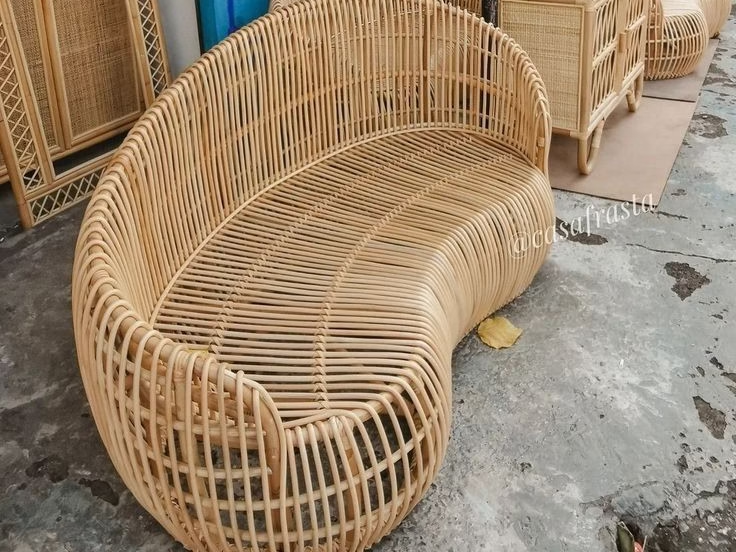
Steps Taken for Preservation
- Government Support: Grants and schemes by the Andhra Pradesh government provide financial aid and training to artisans.
- Skill Development Programs: NGOs and craft organizations organize workshops to teach younger artisans traditional techniques.
- Promotion through Exhibitions: Furniture fairs, handicraft expos, and international exhibitions showcase the craft to wider audiences.
- Eco-Friendly Marketing: Highlighting sustainability and handcrafted uniqueness attracts eco-conscious buyers globally.
🚀 Future Prospects
- Fusion Designs: Integrating traditional lacquer work with modern furniture styles to appeal to contemporary buyers.
- Global Export Potential: Lacquered bamboo furniture can reach international markets where eco-friendly and artisanal products are valued.
- Online Platforms: E-commerce allows artisans to sell directly to consumers, increasing income and exposure.
- Collaboration with Designers: Partnerships with interior designers and lifestyle brands can bring fresh ideas while preserving traditional methods.
Conclusion :
Well, folks, Lacquered bamboo furniture from Andhra Pradesh isn’t just stuff to sit on—it’s a vibrant piece of history. Expert artisans whip up these pieces, making sure they’re super durable but still look totally elegant.
What makes them awesome? It’s the combo of natural bamboo, the hand-applied lacquer, and the intricate designs that spill over with cultural stories. They’re unique, sustainable, and have this timeless charm.
Basically, we need to make sure this epic craft sticks around so everyone, everywhere, can keep celebrating the creativity and artistry behind this stunning Andhra Pradesh heritage.
Also Read:- Beadwork Boho Bags from Himachal

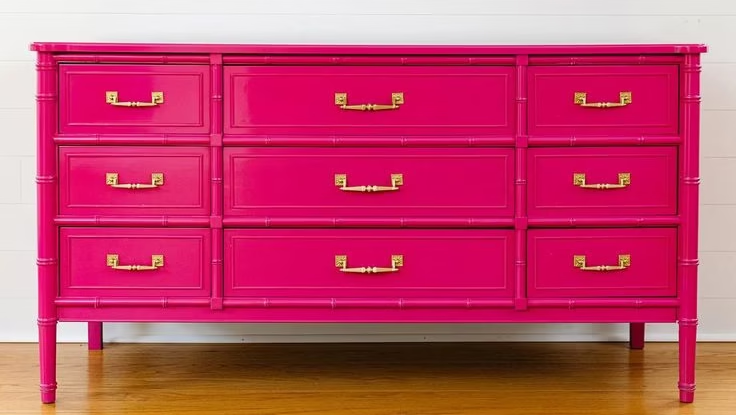
Leave a Reply